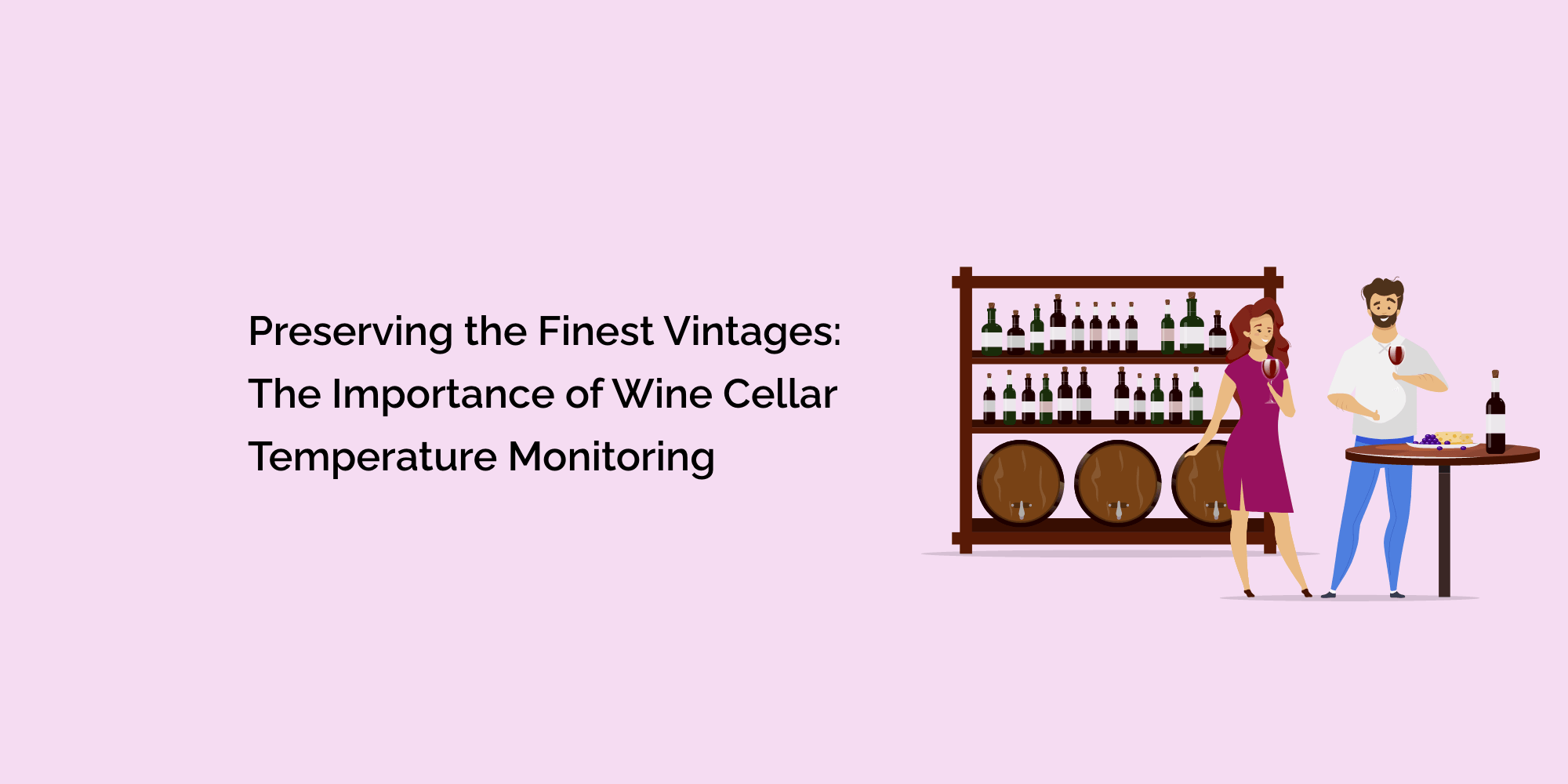Wine has been a beloved beverage for centuries, appreciated for its intricate flavors and the art of its creation. For wine enthusiasts and collectors, a wine cellar is not just a storage space; it's a sanctuary that houses their passion and investment. Fine wines require meticulous care and the right environment to age gracefully and develop their full potential. Among the critical factors that influence the quality and longevity of wines, temperature plays a pivotal role. Proper temperature control is the key to ensuring that your cherished bottles mature gracefully and deliver an exceptional tasting experience. In this comprehensive blog, we will delve into the importance of wine cellar temperature monitoring, the impact of temperature on wine aging, and how investing in reliable monitoring systems can safeguard the finest vintages in your collection.
The Significance of Wine Cellar Temperature:
Temperature is a fundamental factor in wine storage due to several reasons:
-
Wine Aging and Development: Proper temperatures allow wines to age gracefully, leading to the development of complex flavors and aromas over time.
-
Consistency in Aging: Maintaining a stable temperature throughout the wine cellar ensures that all bottles age uniformly, avoiding variations in the aging process.
-
Preventing Spoilage: High temperatures can lead to wine spoilage, causing off-flavors and aromas that diminish the wine's quality.
-
Avoiding Oxidation: High temperatures can accelerate oxidation, negatively impacting the freshness and aging potential of wines.
- Preservation of Investment: For wine collectors, proper temperature control safeguards the investment value of their collection, preserving the market value of rare and valuable bottles.
The Impact of Temperature on Wine Aging:
Temperature directly impacts wine aging and can significantly influence the overall quality and taste of the wine:
-
Ideal Aging Conditions: The ideal temperature range for wine aging is between 55°F to 59°F (12.8°C to 15°C) for red wines and 49°F to 55°F (9.4°C to 12.8°C) for white wines. Proper temperature conditions allow wines to develop complex flavors and mature gracefully.
-
Preservation of Freshness: Controlling the temperature prevents premature aging, preserving the freshness and vibrancy of young wines.
-
Minimizing Wine Faults: Temperature fluctuations and improper storage can lead to wine faults, such as premature oxidation, microbial contamination, and cork taint.
-
Consistency in Cellar Conditions: Stable temperature ensures that all bottles age uniformly, avoiding inconsistencies in the aging process.
- Showcasing Terroir: Proper aging conditions allow wines to express their unique terroir and varietal characteristics fully.
Challenges in Wine Cellar Temperature Monitoring:
Maintaining the ideal temperature in a wine cellar can be challenging due to several factors:
-
External Temperature Fluctuations: Wine cellars located in regions with extreme weather conditions may experience temperature fluctuations, impacting the aging process.
-
Inadequate Insulation: Poor insulation can result in temperature variations within the cellar, affecting wine quality.
-
Cooling System Malfunction: Cooling systems can malfunction or break down, leading to uncontrolled temperature changes.
-
Human Error: Human error, such as forgetting to adjust the cooling system settings or accidentally leaving the cellar door open, can impact temperature stability.
- Large Wine Cellars: In large wine cellars, maintaining consistent temperature throughout the space can be challenging.
The Importance of Wine Cellar Temperature Monitoring Systems:
Investing in a reliable temperature monitoring system provides several benefits:
-
Real-Time Monitoring: These systems provide real-time data on temperature fluctuations, enabling immediate action in case of deviations.
-
Alerting Mechanisms: Monitoring systems can send alerts and notifications if the temperature exceeds predefined thresholds, preventing potential wine spoilage.
-
Historical Data Analysis: Analyzing historical data helps identify trends and patterns, allowing collectors to fine-tune storage conditions for optimal wine preservation.
-
Remote Monitoring: Some monitoring systems offer remote access, allowing collectors to check the cellar's temperature from anywhere.
- Integration with Cooling Systems: Advanced monitoring systems can integrate with wine cellar cooling systems to maintain precise temperature levels automatically.
Types of Wine Cellar Temperature Monitoring Systems:
Several types of temperature monitoring systems are available for wine cellars:
-
Wi-Fi-Enabled Sensors: Wi-Fi-enabled sensors collect and transmit real-time data to a centralized platform, allowing remote access and monitoring through a smartphone app or web interface.
-
Bluetooth Sensors: Bluetooth sensors offer local monitoring capabilities, ideal for smaller wine cellars or spaces with limited connectivity options.
-
Internet of Things (IoT) Solutions: IoT-based systems integrate various sensors and devices, providing a comprehensive platform for monitoring and controlling the wine cellar environment.
- Cloud-Based Monitoring: Cloud-based systems store data on remote servers, allowing easy access to historical data and enabling alerts and notifications via email or text messages.
Best Practices for Wine Cellar Temperature Monitoring:
To optimize the benefits of temperature monitoring, consider the following best practices:
-
Consistent Monitoring: Regularly monitor and log temperature readings to identify and address any fluctuations promptly.
- Optimal Temperature Range: Ensure the wine cellar maintains a consistent temperature within the ideal range for wine aging.
-
Remote Access: Choose a monitoring system that offers remote access, allowing you to check the cellar's temperature even when away from home.
-
Alert Settings: Define custom alert thresholds for temperature deviations and set up notifications to receive alerts via email or text message.
- Backup Power Supply: Consider using backup power sources for the monitoring system to ensure continuous operation during power outages.
Conclusion:
Temperature is a critical factor in wine aging and preservation. Proper temperature control in the wine cellar ensures that each bottle reaches its full potential, delivering an unforgettable tasting experience. Investing in a reliable temperature monitoring system provides peace of mind and allows collectors to safeguard their passion and investment.
By adhering to best practices and understanding the impact of temperature on wine aging, wine enthusiasts and collectors can confidently build a wine cellar that nurtures their cherished bottles, ensuring they age gracefully and deliver an exceptional tasting experience for years to come.








